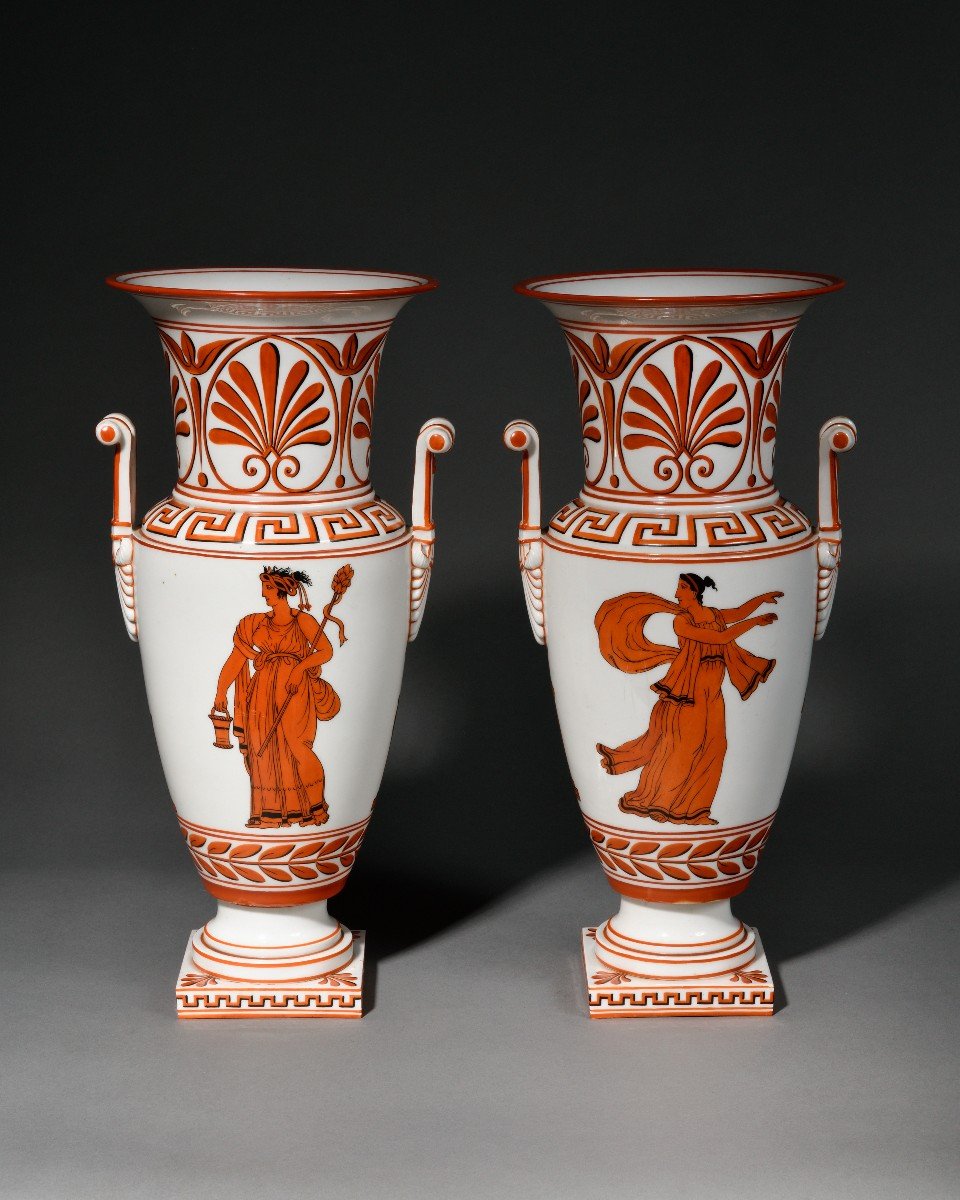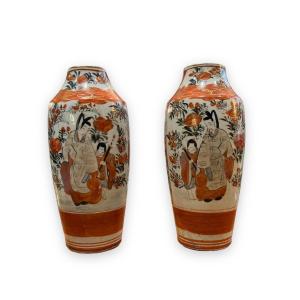Pair of painted porcelain baluster shaped vases.
Restoration period, circa 1830.
Signed " Jullienne rue du Bac n°50 ".
This pair of vases in the Etruscan style presents a decoration of friezes of palmettes and Greek. They are animated on the belly by a warrior on one side and a vestal on the other, each character being differentiated.
They were made by the porcelain painter known as Julienne (also spelled Jullienne) or Julienne-Moreau, active on rue du Bac in Paris from 1830 until 1852. The technique used by the painter is an invention of the latter which earned him an honorable mention at the Exposition des Produits de l'Industrie of 1834, the forerunner of the Universal Exhibitions. In its report, the jury states that "Mr. Julienne has been able to reproduce the beauty of forms and graceful decorations that characterize the style and colors of ancient Greece. The notice of the same exhibition mentions the work of the artist in these terms: "the porcelains of Mr. Julienne are distinguished by their whiteness and by the good taste of its ornaments". In 1839, more details are given on the famous technique used by Julienne: "a new idea of application of red, black and white colors and drawings of Greek vases, to the porcelain ».
Our pair of vases represents a good illustration of the use of antique colors while keeping the white background of the porcelain. Every detail of the vase's shape is also finely underlined by the paint. The shape of the vases itself comes from the Dagoty factory, where they were probably bought, without decoration, by Julienne. Two other pairs of vases of the same shape from the Dagoty factory are known and illustrated by Régine de Plinval de Guillebon in her book Porcelaine de Paris, 1972, and another pair, with the same handles as all these models, sold at Artcurial on December 5, 2017.
These vases are thus a fine illustration of the quality of the porcelain of Paris pieces produced in the first third of the 19th century. Indeed, they combine an innovative technique highlighting a historicizing style with the creation of one of the greatest porcelain factories of the 19th centur




















 Le Magazine de PROANTIC
Le Magazine de PROANTIC TRÉSORS Magazine
TRÉSORS Magazine Rivista Artiquariato
Rivista Artiquariato
